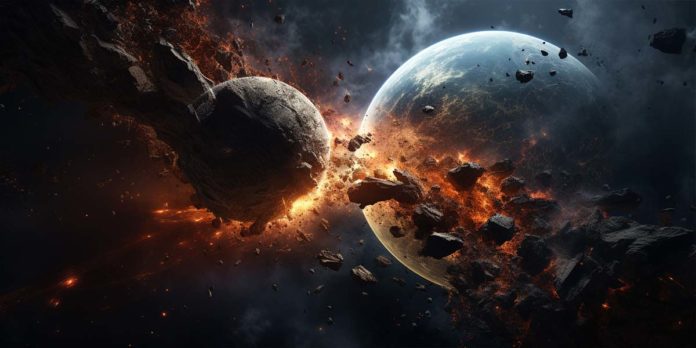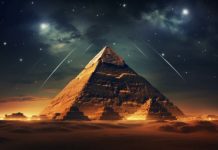Have you ever gazed at the moon and wondered about its origins? What if the answer lies beneath us, deep within Earth’s core? Recent groundbreaking research reported by Science News suggests that remnants of a colossal impact, which gave birth to the moon, still linger in the dense layers of our planet.
Earth’s Core and Theia’s Imprint
Imagine a time, 4.5 billion years ago, when a catastrophic event shaped the destiny of our planet. Theia, a Mars-sized body, collided with the young Earth, a drama that culminated in the creation of the moon. Fast forward to today, where modern science has unearthed evidence that parts of Theia may still be with us, embedded within Earth’s core.
Simulating the Impact on Earth’s Inner Core
The core of planet Earth, long inaccessible to direct exploration, is now yielding its secrets through the power of technology. Geophysicists have identified vast regions of dense rock where seismic waves travel at unusually slow speeds. These regions, called large low-velocity provinces, are mysterious anomalies in the otherwise uniform structure of Earth’s mantle.
Researchers, utilizing the prowess of supercomputing simulations, have meticulously tracked the distribution of Theia’s debris. These simulations suggest that Theia’s dense core did not vanish into the cosmos but instead merged with Earth’s mantle. This revelation has sparked a re-evaluation of the composition of our planet’s heart.
The Density Dilemma of Earth’s Mantle
The Earth’s mantle, a massive layer of rock between the crust and the core, is now suspected to house alien materials. Theia’s mantle, believed to be denser due to higher concentrations of iron oxide minerals, offers a plausible explanation for the denser rock formations beneath Africa and the Pacific Ocean.
The simulations indicate that this heavy material from Theia could have sunk deep into Earth’s mantle, accumulating over millennia to form what we now detect as large low-velocity provinces.
A Legacy Buried Deep in the Core of Planet Earth
The notion that pieces of Theia have endured for nearly 4.5 billion years is remarkable. This theory challenges the previously held belief that these dense mantle structures are merely remnants of Earth’s primordial magma ocean or sunken tectonic plates.
Instead, they may be the geological fingerprints of Theia, enduring through aeons of Earth’s turbulent history.
Earth’s Mantle and The Moon
The implications of this research extend beyond our understanding of Earth’s inner core. They provide a potential solution to the mystery of the moon’s formation and the initiation of plate tectonics on Earth.
By studying Earth’s mantle, scientists are piecing together the history of the giant impact hypothesis, which posits that the moon came into being as a result of Theia’s collision with Earth.
The dense materials at the core of planet Earth not only recount the tale of Theia’s end but also affirm the moon’s violent beginnings. This connection between Earth’s inner core and the lunar surface offers a new perspective on the events that shaped our planet’s geology and influenced the evolution of life.
Conclusion: A Story Engraved in Earth’s Depths
As we stand on the cusp of unravelling Earth’s geophysical narrative, this discovery at Earth’s core calls upon us to appreciate the complex tapestry of celestial events that have forged our home planet. The presence of Theia’s remnants deep within the core of planet Earth enriches our narrative of the solar system’s history, offering a tangible connection to an event that shaped our world and its celestial companion.
In an era where every discovery peels back a layer of Earth’s storied past, the evidence of Theia’s remnants is a testament to the dynamic and ever-changing nature of our planet. It is a story of destruction and creation, of a violent past and a harmonious present, a narrative written not just in the annals of science but in the very core of planet Earth itself.












